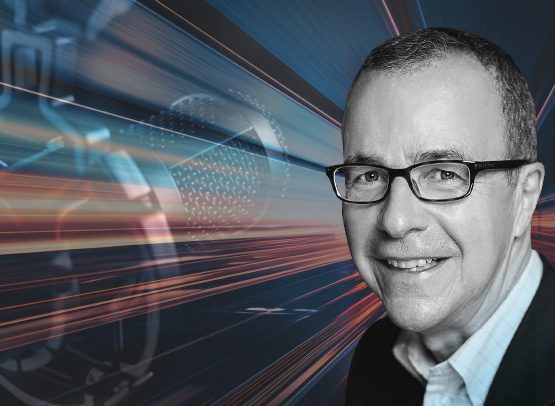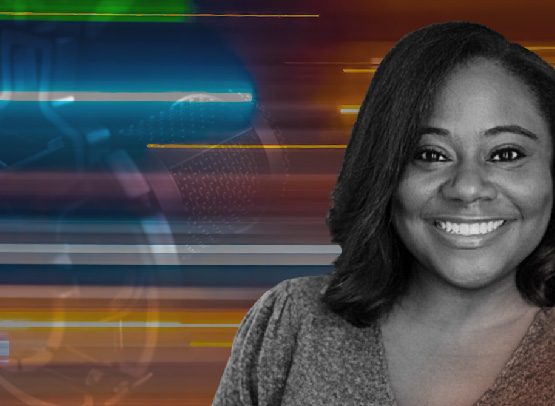“It’s like the Mike Tyson quote,” Deirdre Drake says. “Everyone’s got a plan until they get punched in the face.”
Deirdre is the EVP and Chief People Officer of UScellular, the country’s fourth-largest wireless carrier. She’s been working in HR for over 30 years and has experience in many industries, from Financial Services to Telecom. I’m hosting a conversation between her and Livewire’s president, Mark Attard.
The discussion isn’t about boxing. Deirdre’s Mike Tyson quote is referencing the COVID-19 pandemic and how it disrupted her organization’s ideas about sustaining culture.
Like most organizations, 2020 was a significant year for UScellular. Not only were they facing the pandemic and social unrest across the U.S., they were also welcoming a new CEO. This is a complex task in normal times. But Deirdre and the rest of the leadership team was able to find opportunity in crisis. Their new CEO had a strong transition and the organization deftly navigated the challenges that threatened so many businesses.
What does she attribute this success to?
Effective communication.
“Corporate and internal communications were instrumental in ensuring that our decisions at a leadership level made our associates feel the way we wanted them to and informed them about what they needed to do” she explains.
It’s classic ‘hearts and minds’ thinking. But that doesn’t mean it was easy.
Deirdre goes on to talk about the challenges: how the sheer volume of information made triage and synthesis essential. “In the early days, representatives from each area of the business were meeting five times a day. Corporate comms was critical there, as they had to come away from each of those meetings with different messages to communicate – sometimes to everyone, sometimes to customers, sometimes just to associates or leaders. We vetted everything based on its time commitment, priority, impact, and its relevance on helping our people do their work.”
Here, Mark observes. “You’re hitting on the cost of consumption – measuring the volume of information going out to employees based on the time it costs them to absorb it. Our vision is to get to the point of allocating ‘time’ budgets to various departments. So, if Q3 is when a new product is launching, the product marketing team might get 55 minutes of frontline employees’ time and attention to consume information. But then in Q4, they have less. This doesn’t just value your employees’ time: it makes the people who craft the communication content be strategic and deliberate about how they use those 55 minutes.”
It’s an ambitious vision, to be sure.
“We’re not quite that sophisticated” Deirdre confesses. Then, a smile. “Yet.”
“You’re touching on a dilemma all companies face” she continues. “Everyone thinks their message is important. But we want the frontline to spend their time interacting with customers. We have to get crisper about what we expect of them in terms of communications.”
And while this is easy to say, it’s important to note that it isn’t how every organization functions. Too often, communicators are among the last people to know what’s going on, only brought in to disseminate the information that everyone else has agreed upon.
That isn’t how UScellular does things. They have representation from every functional area at the table to discuss things holistically, and then everyone takes back their own priorities to execute. For corporate comms (which includes internal comms and reports to HR), that means coming from each meeting with a list of messages to communicate to the relevant audiences – and only the relevant audiences.
“Functionally, you do not get to go off on your own to communicate what you want” Deirdre explains. “We as a collective carve out the space and decide what’s important. No one gets to be a lone wolf here, and this is something that really contributes to the feeling of a strong leadership team and culture.”
There’s that word again. Culture.
UScellular has a very open and transparent culture. Their external brand is one that values community and human relationships. And their new CEO – Laurent Therivel (or “LT”) – made maintaining the company’s culture one of his top priorities.
This is where Deirdre’s Mike Tyson quote comes in. Because yes, the pandemic was a “punch in the face” in terms of maintaining culture…but UScellular punched back.
“We had always thought it was impossible to sustain our culture through a remote model” Deirdre says. “And we were bifurcated. Some of us were working remotely, but we also had associates working in stores or on our network that didn’t have that luxury. This challenged us to show those folks our support and instruct our leaders about how to manage their workforces.”
Establishing LT as the new CEO was critical. In these challenging moments, he needed to be seen walking the talk of UScellular’s emphasis on people, community, and the human element.
Livewire supported UScellular with many aspects of LT’s CEO transition, and Mark notes. “In some ways, the pandemic gave LT some opportunities that he wouldn’t have otherwise had. It really let him show his human and caring side.”
Deirdre agrees. While normally, the new CEO would do a ‘roadshow’ – touring various offices and communities – that simply wasn’t an option. “We got messages out to everyone in formats we hadn’t previously used. We leaned heavily on video and other digital tools to bring out LT’s personality.” It also reinforced his leadership brand: young, energetic, technically savvy, and accessible.
LT hosted virtual AMAs ("ask me anything"), joined conversations on Yammer, and was extremely candid in his videos and other touchpoints.
“I’m amazed by people’s resolve” Deirdre says, using LT as an example: “imagine taking over a 6000-person company while barely being able to meet anyone. But I’m amazed by our resolve as people, as a company, as a country…as a world, even.”
But it’s clear that she doesn’t take this for granted.
“This increases the importance of being crisp in our messaging, using time wisely, and not overextending people on these platforms [Teams, Zoom, etc.] and burning them out. We have to balance our new way of working, because we’re never going to go back to the way it was.”
Mark asks her what she thinks about the future of remote work, citing a stat that ~80% of employees want to continue working from home, but only ~30% of employers do.
“In practical terms, we had offices that housed 30 people from different functions that didn’t work together. Why wouldn’t we send those people home? You can’t make the argument anymore that the work can’t be done remotely. And once businesses see that they can save capital by doing it this way, they will.”
Deirdre is decisive here. Pragmatic. But she’s quick to balance it with a nod to the human:
“But many people value the connections they have at work. So how do we enable that by having ’we’ spaces?” She says that people likely won’t need a specific, designated desk to sit at every day, but they will need opportunities to connect.
“Is UScellular a cameras-on or cameras-off kind of culture?” I ask.
“We are cameras-on,” she says, surprising no one. “I think companies that don’t use their camera through the normal course of business are missing an opportunity to maintain human connection.”
I ask her to talk a bit more about that human element. After all, she is the CHRO, and communications at UScellular are part of her mandate. This isn’t how every organization does it, but increasingly, organizations are connecting HR and comms.
Deirdre is emphatic:
“If you think about the human capital priorities of the business and you think about HR, it makes sense. Your ability to transform a business is about everyone being ‘all in.’ How clearly you articulate what you’re doing and why will directly impact how easily you can do it. Showing employees why changes are good for them, for the company, for customers, for shareholders…it’s like that saying: culture eats strategy for breakfast.”
Here, Mark and Deirdre exchange a quick back-and-forth, aligning on the idea that ‘brand’ is fluid, and it needs to be cohesive and complementary for each audience. Organizations invest time and money in creating and then selling a customer experience. But it’s frontline employees who ultimately have to deliver that promise. They rarely get the same attention.
Deirdre sums it up well, saying that “It’s important that our associates feel like representatives of our brand to the community. We just did a brand launch, and many people would think of that as an external thing. But living our brand is important to our associates. So, giving them tools to live the brand is a part of our internal comms focus. That complementary focus is really important.”
Mark plays Devil’s Advocate for a moment: “Since frontline employees play a huge role in delivering the brand promise, many people say that employee communication should fall under Marketing.”
“There are many ways it could work,” Deirdre says. “What’s important is that the internal doesn’t get overshadowed by the external and that everyone is aligned.”
At this point, I check the clock. Our hour has flown by. I ask Deirdre if I can ask one last question – a fun one. Of course, she is game.
“If we went back in time ten years and brought the Deirdre from ten years ago to the present, what would surprise her the most?”
Neither Mark or I were expecting the answer she gave, after a few thoughtful beats:
“What would blow my mind,” she says, “is the role of the clickbait, instant gratification culture we’ve created. I never would have thought that this amazing technology would have the ability to arc so far in the other direction.”
She’s right, of course. And the answer makes one thing abundantly clear about Deirdre Drake:
She sees communication as something powerful that must be used with care, responsibility, and respect. For every stakeholder.







